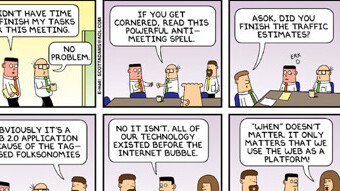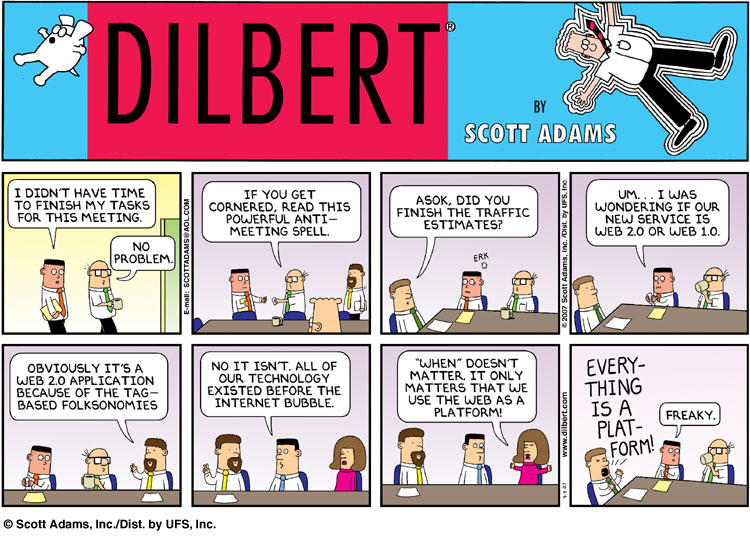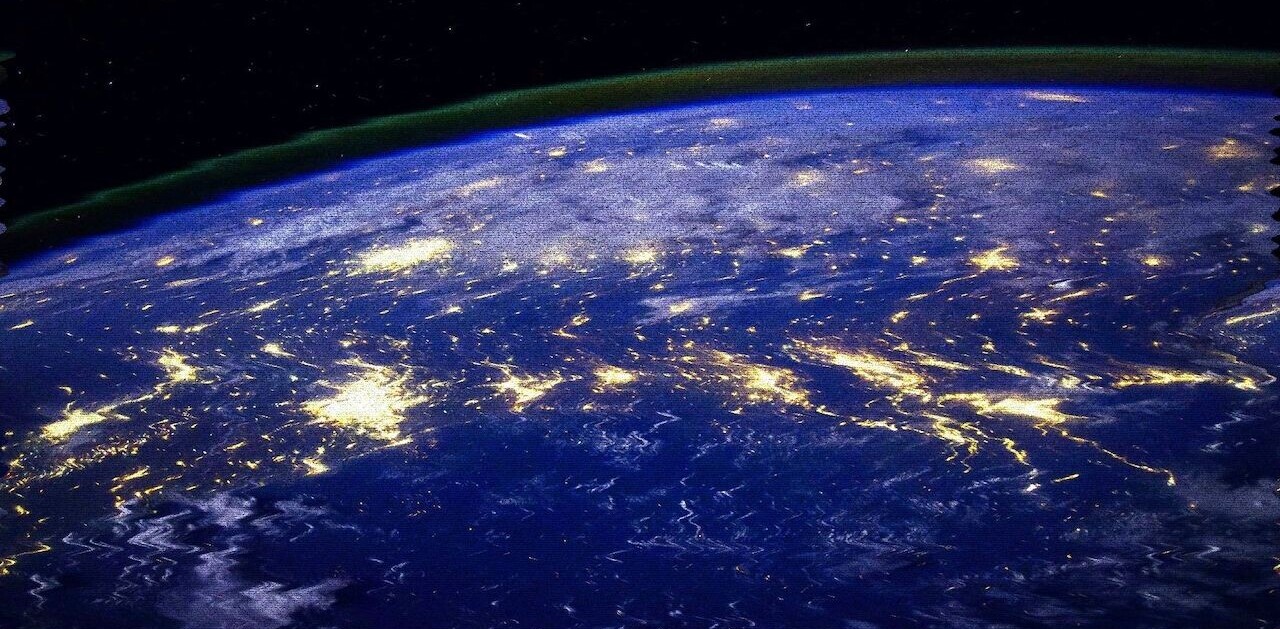
This weekend I had some people over for dinner. They weren’t working in the Internet scene so I had to explain to them what I did. I talked about The Next Web Conference. They listened politely and then offered “So it is about web2.0”. “Well” I replied “Web2.0 is kinda passé. We don’t really talk about it like that anymore”. “So it is about Web3.0!?” they said cheerfully. “No, not about that either”. “So what DO you call the current web then?”.
Yes, good question.
Less than a year ago Tim O’Reilly wrote and published a document titled “Web Squared: Web 2.0 Five Years On“. In it O’Reilly describes a future of connected devices, off and online services that converge and concludes with this call for action: “It’s time for the Web to engage the real world. Web meets World – that’s Web Squared.”
Not only is the document very inspiring and probably partly true, it was also a very smart PR strategy. After all, they didn’t have to get all new domain names (all the Web3 variations were gone anyway) to display the new name: web2summit.com would still be web2summit.com. You would just have to pronounce it differently. Like “Web Squared Summit”. Smart.
Unfortunately (depending on who you ask) nobody picked up on the “Web Squared” meme (We did register thesquaredweb.com though!). Maybe it was too geeky, or too calculated or maybe the web of connected things just didn’t happen.

So what should we call the current web? Today I got my answer from Michael Meyer. He is the CEO of Adaptive Path and is currently visiting Amsterdam so we got together to have lunch and talk about entrepreneurship, the state of the web and our companies future in todays ever changing world.
Meyer told me how he was has basically two types of clients. Those that ‘just’ want a website and those that understand that any website is always Web+1.
You have your website but also a sales channel.
Or the website and an offline presence.
Maybe it is the website + a social presence: Twitter, Facebook or a blog.
Either way, the days that you ‘just’ had a website are gone. Everything is interconnected, multi-channel and should be a concerted effort.
The Web has become embedded in normal life, business and social interaction. It is such an important part of whatever you do that a company can’t consider its web presence an isolated experience anymore. Meyer uses his Web+1 metaphor to wake clients up and help them see that their websites should be part of their overall strategy and that all their customer interaction should be part of a bigger picture.
As we enjoyed our hamburger I listened and suddenly it all made sense. Web2.0 took us from static HTML pages to interactive and social website that were dynamic and performed almost as applications. Web+1 takes those same Web2.0 sites and connects them to everything else. Isolated verticals are a thing of the past. We now work cross media (From web to TV to offline store), cross platform (from PC to iPhone to iPad) and cross service (From Twitter to facebook to Flickr).
Tim O’Reilly wasn’t wrong. This is in effect the Interconnected web. It just isn’t so much machines talking to machines but websites communicating to everything else, and back.
Now don’t get me wrong: I’m not planning on claiming ‘Web+1’ domains names, conferences or even to start a meme. I don’t care much if people use the term or not. What I do like it to have something, an analogy, to describe the current state of the web and to have something to say to people who are wondering what happened after Web2.0.
It wasn’t Web Squared.
It might be Web+1.
P.S. check out this Dilbert illustration. During your next meeting, replace Web2.0 with Web+1 and do the same. Lets see what happens:
Get the TNW newsletter
Get the most important tech news in your inbox each week.






